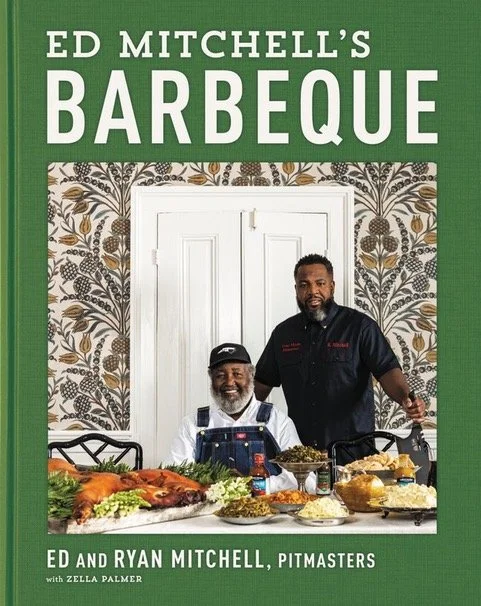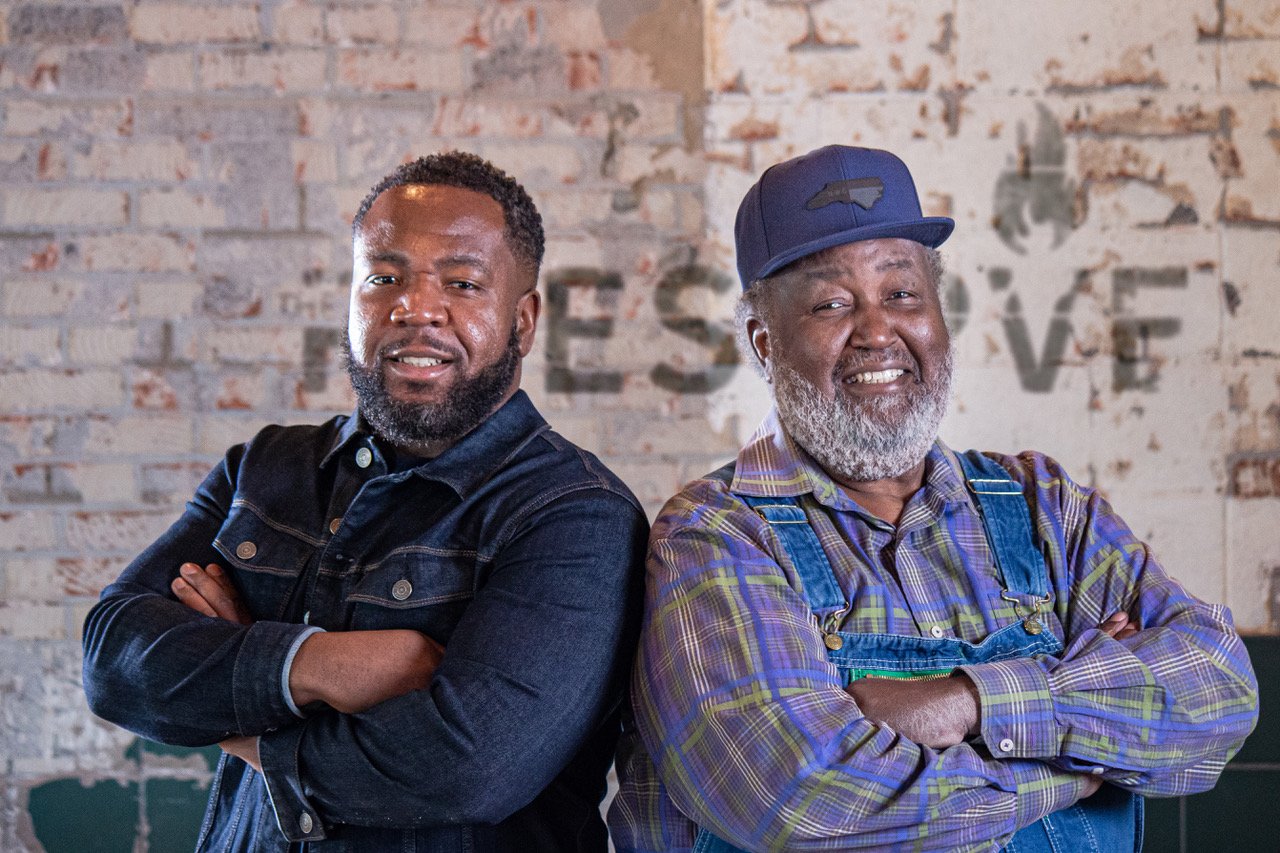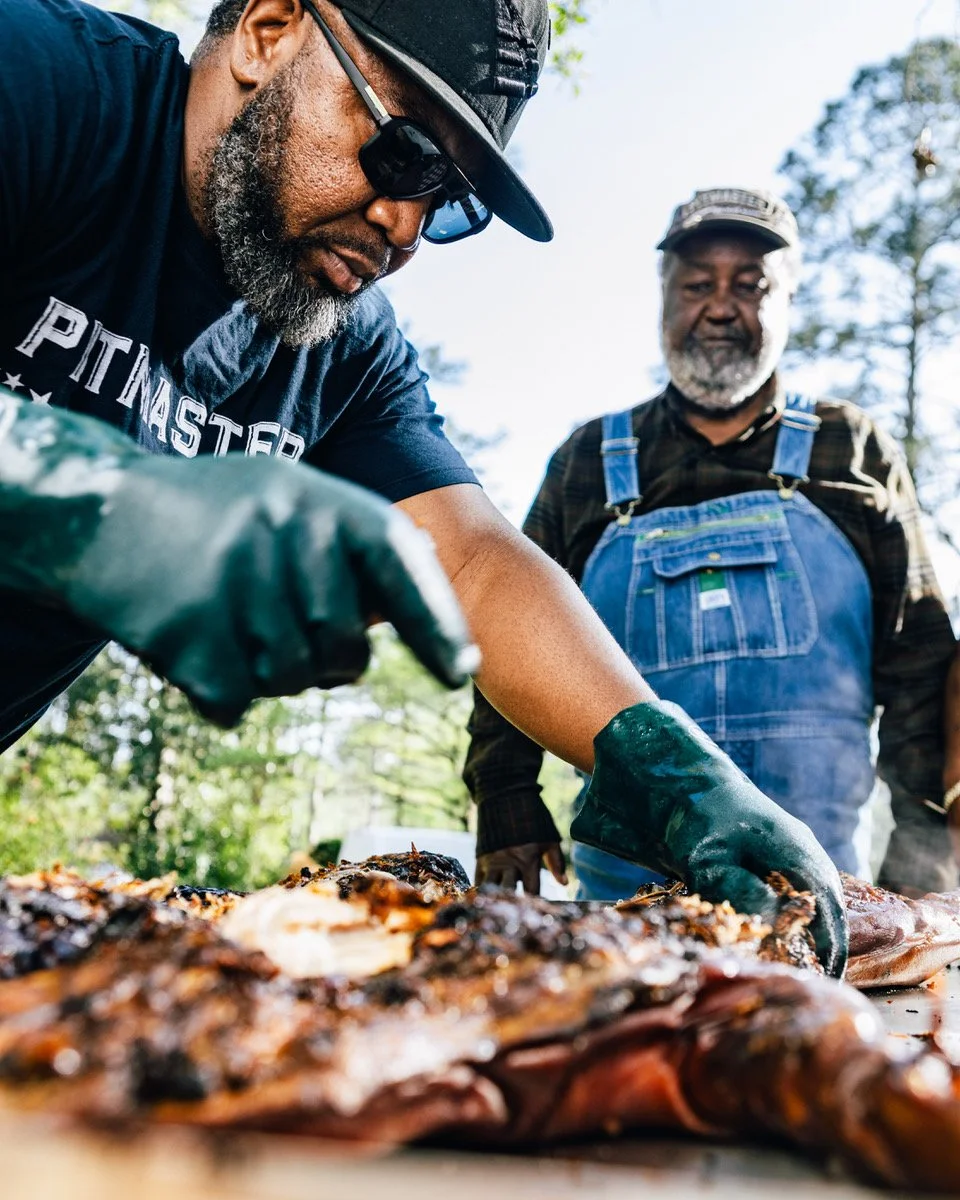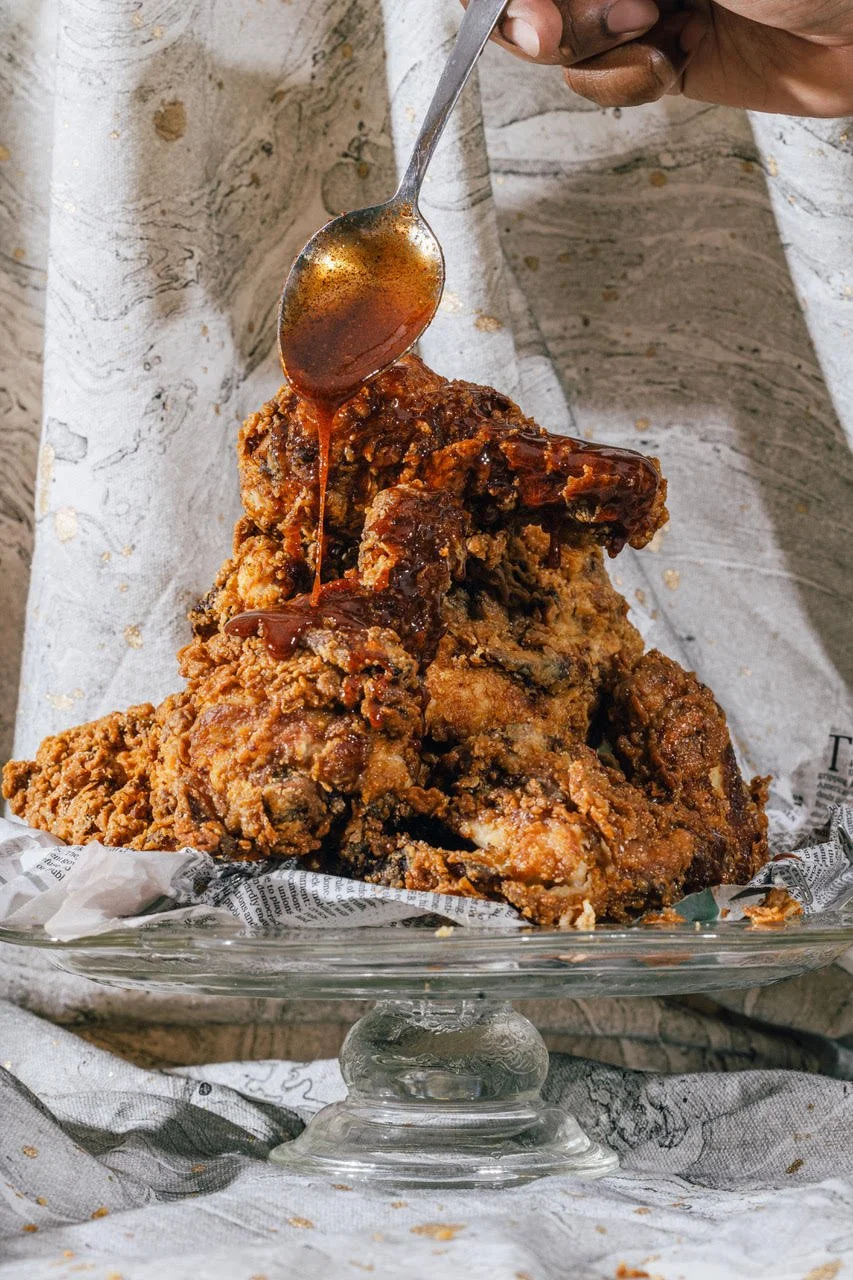Why Apple Cider Vinegar is So Important in the Cuisine of North Carolina
Ed Mitchell’s BBQ Cover
In a new book of recipes and family and cultural history, Ed Mitchell’s Barbeque: Celebrating the Eastern North Carolina Whole Hog Barbeque of My African American Ancestors, a 1937 excerpt from Slave Narratives is included. Wesley Jones, once an enslaved individual in South Carolina, describes staying up all night to repeatedly swab a whole hog front and back, a cotton rag wrapped around a long stick, with a barbecue sauce made of vinegar, black and red pepper, salt, butter, sage, coriander, basil, onion, garlic, and a little sugar. When drippings formed, they perfumed the smoke—”til it ooze seasoning and bake all through.”
The new cookbook was conceived from the start to be inclusive of history, says Ed Mitchell’s son and co-author Ryan Mitchell, “to consider origins and the history of a passion.”
The whole hog is eastern North Carolina’s protein of choice, because, explains Mitchell, “If you tie it back to colonization and slavery, the two major ports for the entire country were Charleston, South Carolina, and Wilmington, North Carolina. When people were coming over and settling in, they brought specific animals to this land area first and in larger quantities, like Ossabaw Island hogs from Spain and other heritage breeds that were easier to transport. So, we settled in with that animal. The hog was really the first domesticated animal of survival here, as it related to feeding us.”
The Many Uses for Apple Cider Vinegar
Ryan and Ed Mitchell
Ryan Mitchell wrote the book alongside his legendary pitmaster father Ed Mitchell and Zella Palmer, an educator, food historian, author, filmmaker, and the Chair and Director of the Dillard University Ray Charles Program in African-American Material Culture. He explains that vinegar evolved as a signature of eastern North Carolina barbecue—and is now typical within mains, sides, and even some desserts—for very practical reasons. In the Carolinas, a single whole hog could feed half the plantation. But due to its size, cooking a whole hog necessitated preservation (or the ability to prevent the formation of bacteria) both throughout the long and slow cooking period and in the interval between slaughtering and cooking the animal. Other styles of U.S. barbecue rely on smaller cuts of meat that are likely to be eaten within a shorter amount of time; with vinegar as a preservation tool, larger quantities of meat could be saved for multiple days.
History of Apple Cider Vinegar & BBQ
Mitchells barbecuing
Apple cider vinegar, like all vinegar, has been used for fermentation and preservation since early Egyptian and Babylonian societies, describes North Carolina Historic Sites; it is identified by the formation of acetic acid by introducing yeast and bacteria. In its authentic “mother state,” says Mitchell, unpasteurized vinegar might have yielded an extra four days of preservation, depending on how much was used and the time of the year.
Hogs were prepped, seasoned, and chopped outdoors, so another major benefit, says Ed Mitchell, was that vinegar served as an organic insect repellent that kept flies away.
“Even today,” describes Ryan Mitchell, “you’ll see bags of apple cider vinegar on the front doors of country homes, and it’s used widely at hot outdoor barbecue festivals to season pork inside and out. Mitchell recalls his grandmother keeping bags of vinegar around the house when cleaning and frying fish. It also serves as a tenderizer.
Eventually, apple cider vinegar went from a preservation tool to a flavor preference, particularly after refrigeration simplified preservation.
“By then, we were 50 years into liking how the food tastes with the vinegar,” says Mitchell. “We attach ourselves to it from a historical perspective. It’s still a novelty to certain parts of the country that the vinegar-based sauce is an actual barbecue sauce. And the pork gets most of the attention, but we also used it as a preservative on our fish, which still comes in from the Carolina coast, and now as a condiment. At any coastal seafood place, apple cider vinegar is on the table.”
WhiteHouse Organic Apple Cider Vinegar
Recipes Using Apple Cider Vinegar
Ryan Mitchell explains apple cider vinegar’s essential role in a few recipes from Ed Mitchell’s Barbeque: Celebrating the Eastern North Carolina Whole Hog Barbeque of My African American Ancestors, from appetizers and sides to dessert.
The Mitchell’s have enjoyed using White House Foods Organic Apple Cider Vinegar for years, and also create and nationally distribute their own line of barbecue sauces under the label True Made Foods.
Collard Greens
Collard Greens 08_ by Key West Wedding Photography is licensed under CC BY 2.0.
The greens reflect the evolution of a flavor preference, says Mitchell, as vinegar became less a necessity and more a condiment, and “really good to the palate.” It’s preferred with some crushed red pepper to spice it up a little bit.
“Baked Beans” by ☼☼Jo Zimny☼☼ is licensed under CC BY-NC-ND 2.0.
Southern Baked Beans
Here, the vinegar can tone down and offset the sweeter sauce. Especially when paired with molasses and brown sugar, a little splash of apple cider vinegar creates a savory-sweet balance.
North Carolina Souse Meat (Hog’s Head Cheese)
Mitchell calls their recipe an “old school recipe,” made from animal discards. “When the elders made it, the vinegar gave it a sweet and sour taste. My granddad said that’s about the only way to eat it and have it taste like something, because it’s a boiled down congealing of discards. Once you add the vinegar and put it in a cooler, you also add almost a week of additional preservation time.”
Brunswick Stew_ by Liralen Li is licensed under CC BY-NC-ND 2.0.
Brunswick Stew
Brunswick Stew originated as a way to salvage leftover veggies, beans, and meat from going to waste. Adding a little apple cider vinegar to the pot meant they could be stretched to stay fresh even if kept outside for another day or two.
Oregano Marinated Spatchcock Chicken by mccun934 is licensed under CC BY 2.0.
Barbequed Spatchcocked Chicken
This recipe also shows the evolution of a flavor preference. When smoking chicken on the grill, the vinegar-based barbecue sauce infuses the oak and charcoal, changing the taste and feel of the chicken. Earlier, it was again a preservation method. Mitchell adds that, additionally, in the Carolinas, white vinegar and lemon have often been used to clean grocery store chicken. “My grandmother had all of these safe ways to clean food before cooking. When bringing foods in from the outside, vinegar killed bacteria and any bugs from the garden—then it became a part of the recipe— you cook with it and it kills microorganisms, especially on greens and chicken. These origins are based on a true farm-to-table lifestyle.”
Banana pudding by joncutrer is licensed under CC BY-NC 2.0.
Banana Pudding
Vinegar is added to the meringue when you put it back in the oven, to give the meringue form—it’s like a little secret ingredient.










